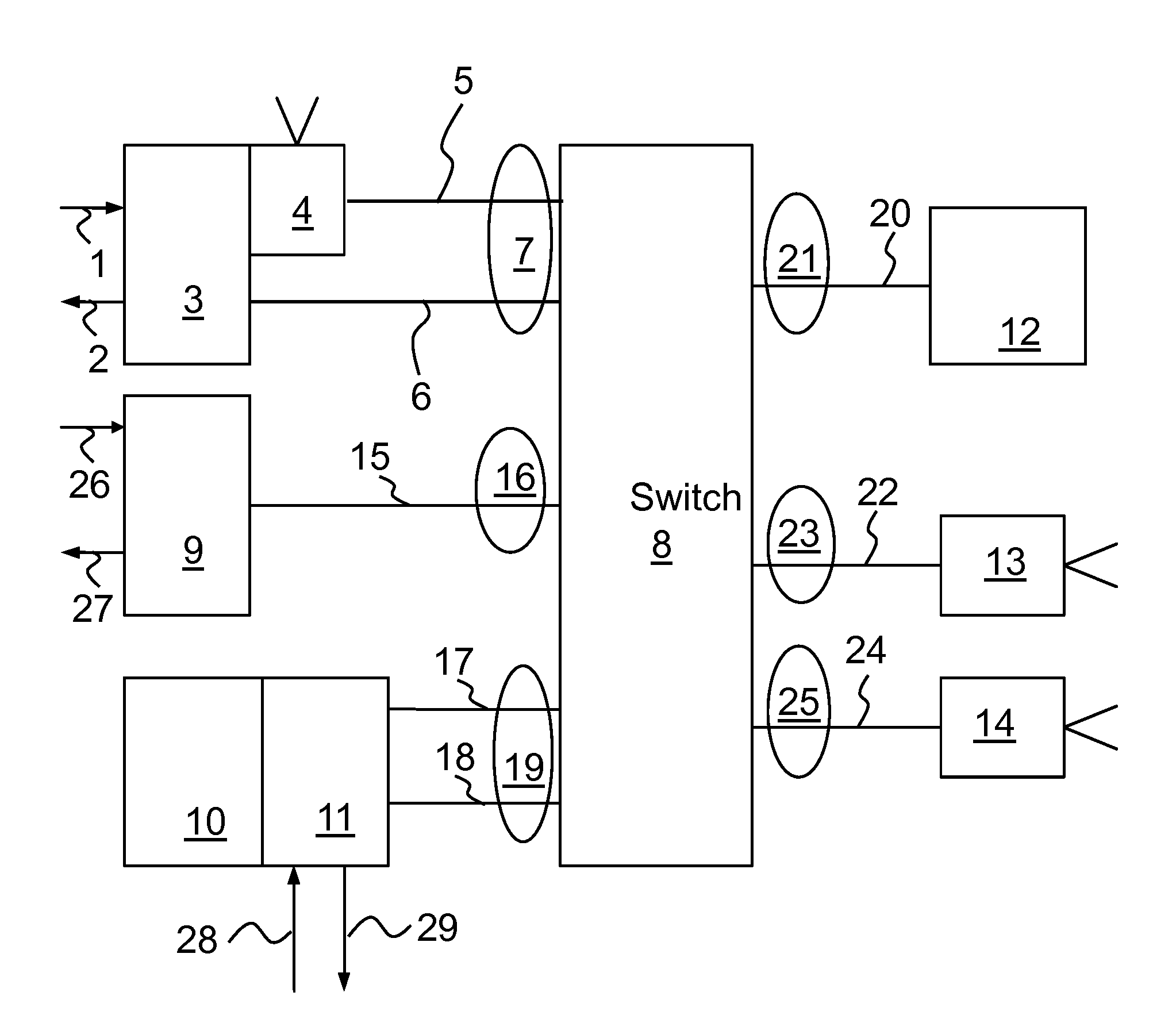Method and device for synchronizing camera systems
a camera system and synchronization technology, applied in the field of automatic image processing, can solve the problems of low flexibility, unsuitable description method, and low flexibility, and achieve the effect of reducing network traffic and risk of data loss
- Summary
- Abstract
- Description
- Claims
- Application Information
AI Technical Summary
Benefits of technology
Problems solved by technology
Method used
Image
Examples
embodiment 1
[0040]FIG. 1 shows, as an example, a typical realization of a camera network. Below, designations that are typical for Ethernet have been selected. However, it is clear to someone skilled in the art that the embodiment can be applied accordingly to other duplex-capable networks (IEEE1394, etc.).
Switches and Hubs
[0041]An Ethernet hub is a non-intelligent multiport repeater for connecting Ethernet devices. Hubs are very fast since the packets are neither stored nor relayed. With a hub, one speaks of a “shared” Ethernet, i.e., exactly one device can transmit at a single point in time; all of the other devices must wait during this time. The propagation times are no longer predictable, even for networks with low loads. For this reason, hubs are not preferred for networking the network components to each other.
[0042]Therefore, at the least, switching hubs (switches) are preferred. A switch examines each Ethernet frame with respect to its embedded target address and selectively relays the...
embodiment 2
[0061]FIG. 4 shows a system in which synchronization modules are used with memories that store the propagation times between different synchronization modules (38 . . . 40). With the knowledge of these propagation times, path-dependent delay information can be transmitted along with the trigger command.
[0062]In FIG. 4, the reference numeral 8 refers to a switch; each of 9, 30, and 34 refers to a synchronization module formed, in particular, as a stand-alone unit; 12 refers to an image-processing device, for example, a PC; 13 and 14 each refer to a camera unit formed as a stand-alone unit; 16, 21, 23, 25, 32, 35, and 36 refer to physical Ethernet connections or Ethernet network cables; 26 and 31 refer to trigger inputs; 37 refers to a signal output, for example, for triggering a flash; 38 refers to a delay A; 39 refers to a delay B; and 40 refers to a delay C. In the sense of the invention, a stand-alone unit is understood to be a unit that is directly coupled to the network.
embodiment 3
[0063]In FIG. 5, the reference numeral 54 refers to an image-processing device, for example, a PC; 55 and 56 each refer to a switch; 57, 58, 59, 60, 61, 62, 63, 64 refer to physical Ethernet connections or Ethernet network cables; 65, 66, 67, and 68 refer to networks connected to the switches 33 or 35; 69 refers to a logical path with a delay A and a jitter A; and 70 refers to a logical path with a delay B and a jitter B.
[0064]In FIG. 5, a network is shown in which the delay times and the jitter between the network components are known (e.g., delay and jitter between switch (8) and switch (33)) and are stored in matrix form in the synchronization modules 9, 30, 34. The corresponding times for an end-to-end connection (e.g., path (69) composed of the sections (9.8), (8.33), (33.65), (56.13)) can be calculated from the sum of the times of the sections. If two paths are possible for an end-to-end connection, the path that is best-suited for the application can be selected with referenc...
PUM
 Login to View More
Login to View More Abstract
Description
Claims
Application Information
 Login to View More
Login to View More - R&D
- Intellectual Property
- Life Sciences
- Materials
- Tech Scout
- Unparalleled Data Quality
- Higher Quality Content
- 60% Fewer Hallucinations
Browse by: Latest US Patents, China's latest patents, Technical Efficacy Thesaurus, Application Domain, Technology Topic, Popular Technical Reports.
© 2025 PatSnap. All rights reserved.Legal|Privacy policy|Modern Slavery Act Transparency Statement|Sitemap|About US| Contact US: help@patsnap.com



